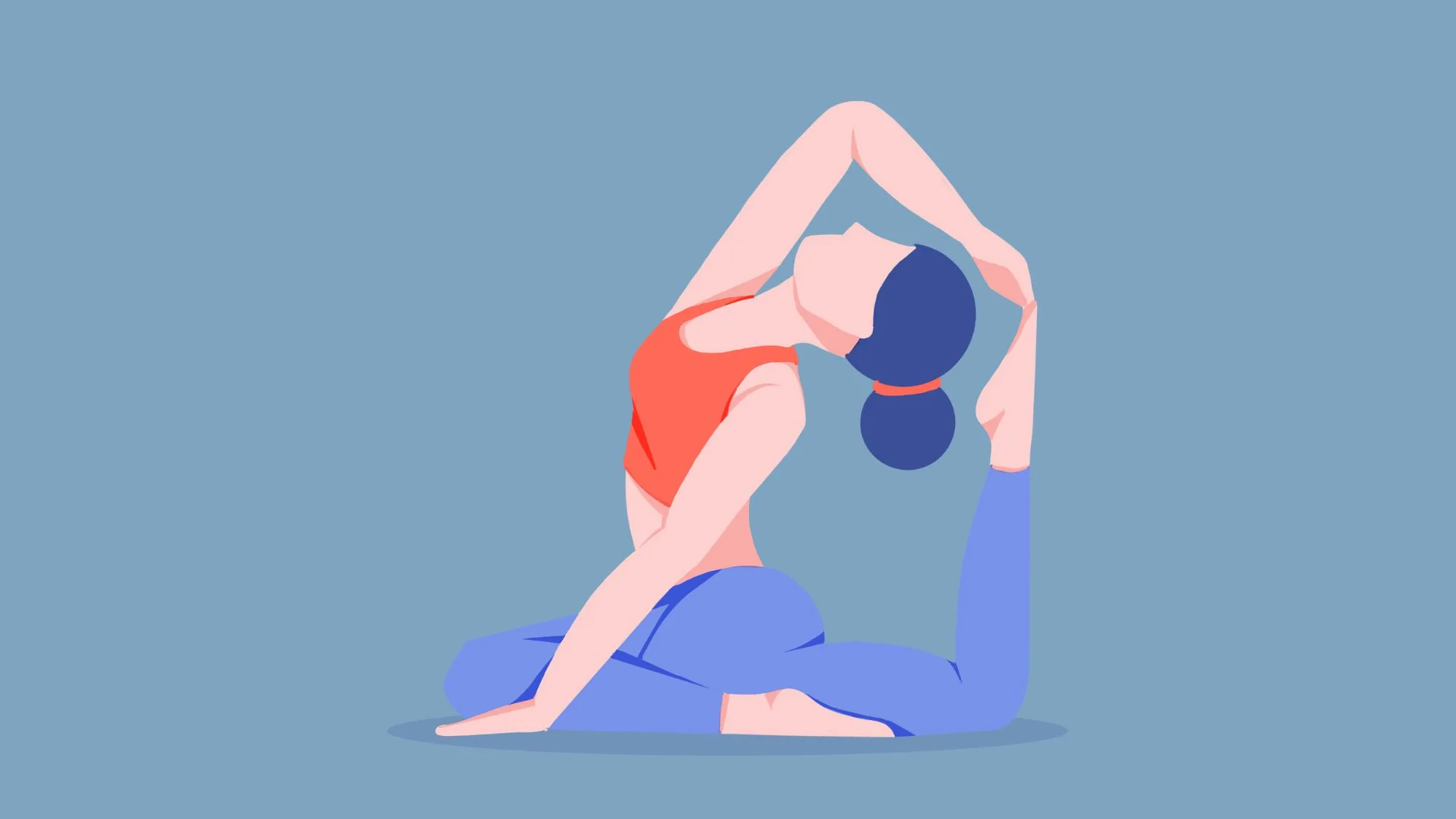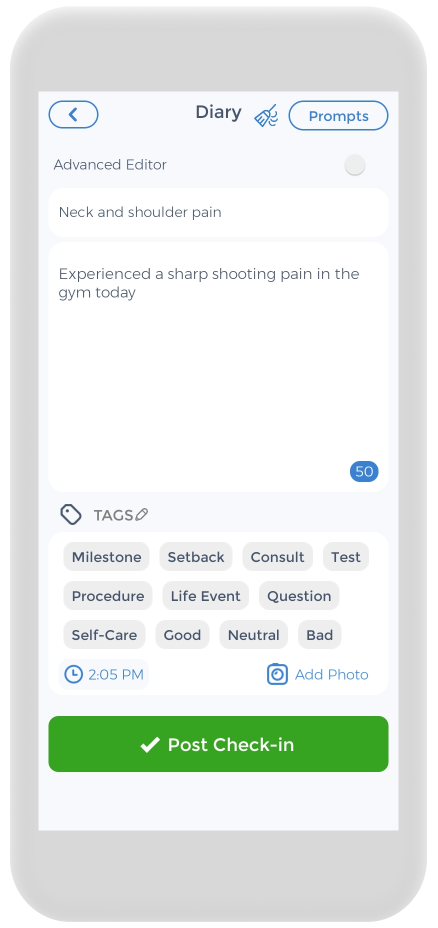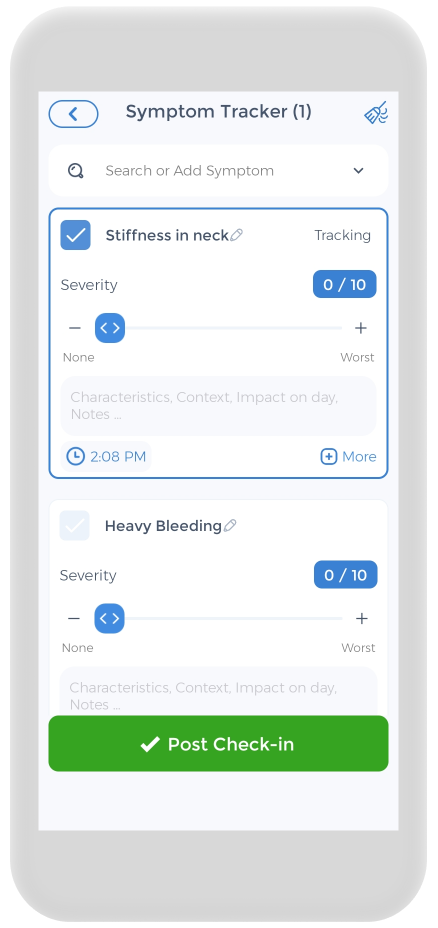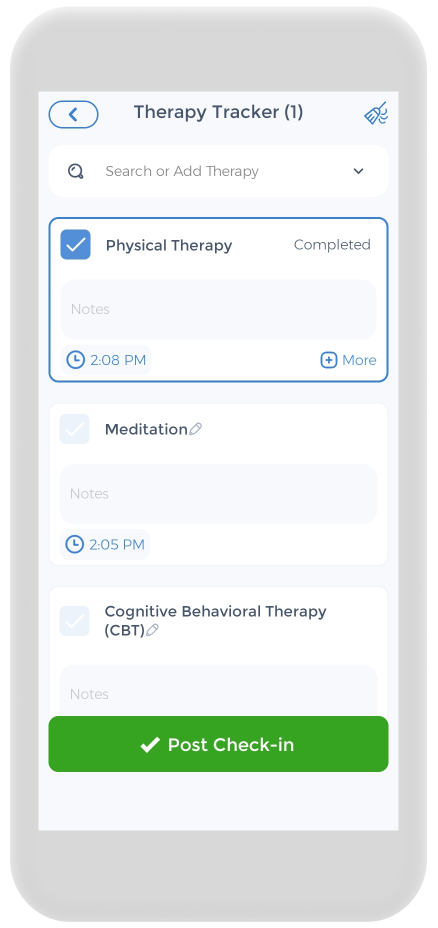
Yoga has long been recognized as an effective way to improve flexibility, balance, and overall physical health. But did you know that yoga can also help alleviate shoulder pain? Whether you’re experiencing mild discomfort or chronic shoulder pain, incorporating yoga into your daily routine can provide relief and improve your mobility. In this article, we will explore the causes and symptoms of shoulder pain, the connection between yoga and pain relief, essential yoga poses for shoulder pain, safety tips for practicing yoga to ease shoulder pain, and the benefits of incorporating yoga into your daily routine.
Understanding Shoulder Pain: Causes and Symptoms
Before delving into how yoga can help alleviate neck and shoulder pain, it’s important to understand the causes and symptoms of this common ailment. Shoulder pain can be caused by a variety of factors, ranging from a strain or injury to underlying conditions such as arthritis or frozen shoulder.
causes and symptoms of this common ailment. Shoulder pain can be caused by a variety of factors, ranging from a strain or injury to underlying conditions such as arthritis or frozen shoulder.
Recognizing the symptoms of shoulder pain is crucial for proper diagnosis and treatment. Common symptoms include pain, stiffness, swelling, and limited range of motion in the shoulder joint.
When it comes to the causes of shoulder pain, there are several factors that can contribute to this discomfort. One of the most common causes is strains or tears in the muscles or tendons surrounding the shoulder joint. These can occur due to repetitive movements, overuse, or sudden trauma to the area.
Another cause of shoulder pain is rotator cuff injuries. The rotator cuff is a group of muscles and tendons that help stabilize the shoulder joint and facilitate its movement. When these muscles and tendons become inflamed or damaged, it can lead to pain and limited mobility.
Shoulder dislocation is another potential cause of shoulder pain. This occurs when the head of the upper arm bone pops out of the shoulder socket. It can happen due to a fall, direct impact, or excessive force applied to the joint.
Arthritis, a common condition characterized by inflammation of the joints, can also contribute to shoulder pain. Osteoarthritis, in particular, can affect the shoulder joint and lead to discomfort and stiffness.
Frozen shoulder, medically known as adhesive capsulitis, is a condition in which the shoulder joint becomes stiff and painful, limiting its range of motion. The exact cause of frozen shoulder is unknown, but it often occurs after a period of immobilization or as a result of certain medical conditions.
Recognizing Symptoms of Shoulder Pain
The symptoms of shoulder pain can vary depending on the underlying cause. It’s important to pay attention to these symptoms in order to seek appropriate medical attention and treatment.
Pain or tenderness in the shoulder joint is a common symptom of shoulder pain. The pain can range from mild to severe and may worsen with certain movements or activities.
Stiffness and limited range of motion are also common symptoms. If you find it difficult to move your shoulder or experience a decrease in your usual range of motion, it could be a sign of shoulder pain.
In some cases, shoulder pain may be accompanied by swelling or inflammation in the affected area. This can cause the neck and shoulder muscles to appear swollen or feel warm to the touch.
Weakness in the shoulder or arm is another symptom that may indicate shoulder pain. If you notice a decrease in strength or find it challenging to perform everyday tasks that require upper body strength, it’s important to seek medical advice.
In rare cases, shoulder pain may be associated with numbness or tingling sensations in the arm or hand. This could be a sign of nerve involvement and should be evaluated by a healthcare professional.
Understanding the causes and symptoms of shoulder pain is the first step towards finding relief and appropriate treatment. Whether it’s due to a strain, injury, or underlying condition, addressing shoulder pain promptly can help improve your quality of life and restore your shoulder’s functionality.
The Connection Between Yoga and Pain Relief
Yoga offers a holistic approach to pain relief by combining gentle stretching, mindfulness, and controlled breathing. When practiced correctly, yoga can help improve circulation, reduce inflammation, and release tension in the muscles surrounding the shoulder joint.
One of the key benefits of yoga for pain relief is its ability to target specific areas of the body, such as the neck and shoulders. By focusing on these areas, yoga poses can effectively alleviate pain and improve mobility. These poses work by stretching and strengthening the muscles surrounding the shoulder joint, promoting increased flexibility and reducing tension.
For example, poses like Downward-Facing Dog and Standing Forward Bend specifically target the shoulders, helping to release muscle tension and improve range of motion. These poses, when practiced regularly, can have a significant impact on shoulder pain management.
Additionally, practicing yoga can help improve posture, which is crucial for shoulder health. Poor posture can lead to imbalances in the shoulder muscles, resulting in pain and limited range of motion. By incorporating yoga into your routine, you can strengthen the muscles that support proper posture, reducing the risk of shoulder pain and improving overall alignment.
The Science Behind Yoga and Pain Management
Scientific studies have shown that yoga can be an effective complementary therapy for managing chronic pain, including shoulder pain [1]. The combination of physical movement, breath control, and mindfulness practiced in yoga promotes the release of endorphins, the body’s natural pain-relieving chemicals.
Endorphins not only help to reduce pain but also create a sense of well-being and relaxation. By engaging in yoga, you can stimulate the production of these endorphins, providing natural pain relief and improving your overall mood.
Furthermore, consistent yoga practice has been found to reduce inflammation, lower stress levels, and improve overall well-being, all of which contribute to pain relief and improved mobility. Research has shown that yoga can help regulate the body’s stress response, reducing the production of stress hormones that can exacerbate pain.
Moreover, yoga has been found to have a positive impact on the immune system, helping to reduce inflammation in the body. Chronic inflammation is often associated with pain and can worsen existing conditions. By incorporating yoga into your routine, you can support a healthier immune system and reduce inflammation, leading to improved pain management.
Essential Yoga Poses for Shoulder Pain
Now that we understand the connection between yoga and pain relief, let’s explore some essential yoga poses specifically designed to alleviate shoulder pain [2].
Shoulder pain can be a common issue for many individuals, whether it’s due to poor posture, muscle imbalances, or overuse. Incorporating yoga into your routine can help improve shoulder strength, flexibility, and overall mobility.
Gentle Yoga Poses for Beginners
If you’re new to yoga or experiencing mild shoulder pain, these gentle poses are an excellent starting point:
- Child’s Pose, also known as Balasana, is a comforting pose that gently stretches the shoulders, back, and hips. As you sink your hips back towards your heels and reach your arms forward, you’ll feel a gentle stretch in your shoulders and upper back. Take deep breaths in this pose to further release tension and promote relaxation.
- Thread the Needle: This pose stretches the muscles between the shoulder blades and releases tension in the upper back.
- Thread the Needle, or Parsva Balasana, is a pose that targets the upper back and shoulders. By threading one arm under the other (for example, left arm and left hand under the right arm) and resting your head on the mat, you’ll feel a deep stretch between the shoulder blades. This pose helps release tension and improve mobility in the upper back, providing relief for shoulder pain.
- Downward Facing Dog: This pose help with shoulder stretch, hamstrings, and calves, promoting overall body alignment.
- Downward Facing Dog, or Adho Mukha Svanasana, is a foundational pose in yoga that offers a full-body stretch. While primarily targeting the hamstrings and calves, this pose also stretches the shoulders and lengthens the spine. By pressing your hands firmly into the mat and grounding through your feet, you’ll feel a gentle stretch and release in your shoulders.
- Cat-Cow Pose: This gentle flowing movement helps increase mobility in the spine and shoulders.
- Cat-Cow Pose, or Marjaryasana-Bitilasana, is a dynamic movement that promotes flexibility and mobility in the spine and shoulders. As you move through the cat pose, rounding your back and drawing your shoulder blades apart, and the cow pose, arching your back and squeezing your shoulder blades together, you’ll gently stretch and release tension in your shoulders.
Advanced Yoga Poses for Shoulder Strength and Flexibility
If you’re looking to strengthen and improve flexibility in your shoulders, these advanced yoga poses are worth exploring:
- Standing Forward Bend: This pose stretches and releases tension in the shoulders, hamstrings, and back.
- Standing Forward Bend, or Uttanasana, is a pose that offers a deep stretch for the entire back body, including the shoulders, hamstrings, and back. As you fold forward and let your upper body hang, you’ll feel a release of tension in your shoulders. This pose also promotes relaxation and can help relieve stress.
- Dolphin Pose: This pose builds shoulder and core strength while stretching the hamstrings and calves.
- Dolphin Pose, or Ardha Pincha Mayurasana, is a pose that resembles downward facing dog but is performed on the forearms. By pressing your forearms into the mat and lifting your hips towards the ceiling, you’ll engage your shoulders and core muscles. This pose strengthens the shoulders while also stretching the hamstrings and calves.
- Extended Triangle Pose: This pose strengthens the shoulders, stretches the side body, and improves overall balance.
- Extended Triangle Pose, or Utthita Trikonasana, is a standing pose that targets the shoulders, side body, and legs. By extending one arm towards the ceiling and reaching the other arm towards the floor, you’ll feel a deep stretch in your shoulders. This pose also improves balance and stability.
- Supported Headstand: This advanced inversion pose strengthens the shoulders and core while improving circulation.
- Supported Headstand, or Salamba Sirsasana, is an advanced pose that requires both strength and balance. By supporting your head and forearms on the mat and lifting your legs towards the ceiling, you’ll engage your shoulders and core muscles. This pose not only strengthens the shoulders but also improves circulation and promotes mental clarity.
Safety Tips for Practicing Yoga with Shoulder Pain
While yoga can be beneficial for shoulder pain, it’s essential to practice with caution. Here are some safety tips to consider:
 Shoulder pain can be a challenging condition to deal with, but with the right precautions and modifications, you can still enjoy the benefits of yoga. Before starting a yoga practice, it’s crucial to consult with your healthcare provider, particularly if you have any underlying medical conditions or previous shoulder injuries. They can provide valuable insights and guidance specific to your situation.
Shoulder pain can be a challenging condition to deal with, but with the right precautions and modifications, you can still enjoy the benefits of yoga. Before starting a yoga practice, it’s crucial to consult with your healthcare provider, particularly if you have any underlying medical conditions or previous shoulder injuries. They can provide valuable insights and guidance specific to your situation.
If you’re new to yoga or experiencing severe neck and shoulder pain, it’s advisable to seek guidance from a certified yoga instructor who can provide modifications and ensure proper alignment during your practice. They have the knowledge and expertise to tailor the poses to your needs, making the practice safe and effective.
How to Modify Yoga Poses for Shoulder Pain
To avoid exacerbating shoulder pain, it’s important to modify yoga poses as needed. Here are some modifications to consider:
- Using props such as blocks or straps for added support: Props can help you maintain stability and reduce strain on the shoulders. For example, using blocks in poses like downward dog can alleviate pressure on the shoulders and allow you to focus on other aspects of the pose.
- Reducing the depth or intensity of a pose: If a pose feels too challenging or causes discomfort, it’s essential to listen to your body and adjust accordingly. For instance, in a shoulder-opening pose like cow face pose, you can start with your hands apart and gradually bring them closer as your shoulder flexibility improves.
- Listening to your body and adjusting the pose to alleviate pain or discomfort: Your body knows best, so pay attention to any signs of pain or discomfort during your practice. If a pose doesn’t feel right, modify it or skip it altogether. It’s better to prioritize your well-being over pushing through the pain.
- Focusing on strengthening the muscles surrounding the shoulder joint gradually: Building strength in the muscles surrounding the shoulder joint can help stabilize the area and reduce pain. Incorporate exercises that target the rotator cuff muscles, such as external and internal rotations with resistance bands, into your routine.
Remember, practicing yoga with shoulder pain requires patience and self-awareness. It’s essential to listen to your body, take breaks when needed, and gradually progress in your practice. With time and consistent effort, you can find relief and improve your shoulder mobility through yoga.
Incorporating Yoga into Your Daily Routine
To experience the full benefits of yoga for shoulder pain, it’s essential to incorporate it into your daily routine. Yoga not only helps alleviate shoulder pain but also improves flexibility, strengthens muscles, and promotes overall well-being. Here are some tips to help you establish a consistent yoga practice:
Creating a Yoga Schedule for Pain Management
Set aside dedicated time each day for your yoga practice. Aim for a minimum of 20-30 minutes of yoga poses, focusing on shoulder-specific exercises. By scheduling regular yoga sessions, you create a sense of commitment and make it easier to incorporate yoga into your daily routine.
Consider practicing yoga in the morning to kickstart your day. Morning yoga can help you awaken your body, increase blood flow, and prepare you for the day ahead. Alternatively, practicing yoga in the evening can help you unwind and release any accumulated tension from the day, promoting relaxation and better sleep.
Combining Yoga with Other Pain Relief Strategies
While yoga can be effective for shoulder pain relief, it’s important to complement your practice with other pain management strategies. These strategies can enhance the benefits of yoga and provide a holistic approach to pain relief.
One effective strategy is heat or ice therapy. Applying a heat pack or ice pack to your shoulders before or after your yoga practice can help reduce inflammation, alleviate pain, and promote faster healing. Experiment with both heat and cold to see which works best for you.
In addition to heat or ice therapy, over-the-counter pain medications can provide temporary relief from shoulder pain. Nonsteroidal anti-inflammatory drugs (NSAIDs) such as ibuprofen or naproxen can help reduce inflammation and alleviate discomfort. However, it’s important to consult with a healthcare professional before using any medication to ensure it is suitable for you.
Regular visits to a physical therapist or chiropractor can also complement your yoga practice. These professionals can assess your shoulder condition, provide targeted treatments, and guide you through exercises that specifically address your pain. Working with a healthcare professional ensures that you receive personalized care and guidance throughout your pain management journey.
professionals can assess your shoulder condition, provide targeted treatments, and guide you through exercises that specifically address your pain. Working with a healthcare professional ensures that you receive personalized care and guidance throughout your pain management journey.
Remember that everyone’s pain management journey is unique, so it’s important to find a combination of treatments that work best for you. By incorporating yoga into your daily routine and combining it with other pain relief strategies, you can experience improved shoulder health and overall well-being.
Success Stories: How Yoga Has Helped Others with Shoulder Pain
Personal experiences can provide valuable insight into the benefits of yoga for shoulder pain. Here are some success stories from individuals who have incorporated yoga into their pain relief journey:
Personal Experiences with Yoga for Shoulder Pain
“After years of living with chronic shoulder pain, I decided to give yoga a try. The gentle stretches and focused breathing helped me release tension in my shoulders and improve my range of motion. Now, I can enjoy activities that were once painful, such as swimming and gardening.”
Another individual, Sarah, shares her story: “As a professional violinist, I rely heavily on my shoulders for playing. Over time, I developed shoulder pain that affected my performance. Yoga has been a game-changer for me. The specific poses and movements targeted towards shoulder pain have not only reduced my pain but also enhanced my playing technique. I am now able to perform with ease and confidence.”
The Long-Term Benefits of Yoga for Shoulder Health
“Practicing yoga consistently has not only alleviated my shoulder pain but also improved my overall shoulder health. I’ve noticed increased strength, flexibility, and improved posture. Yoga has become an integral part of my self-care routine.”
Another individual, Mark, shares his long-term experience: “After a shoulder injury, I was skeptical about the effectiveness of yoga. However, with consistent practice, I have experienced remarkable improvements. Not only has my pain decreased, but my shoulder stability has also significantly increased. I feel more confident in my daily activities and have even started weightlifting again.”
It’s not just adults who benefit from yoga for shoulder pain. Jessica, a mother of a young gymnast, shares her story: “My daughter was experiencing shoulder pain due to the intense training she was undergoing. We turned to yoga as a complementary therapy, and the results have been incredible. Her pain has reduced, and she has developed better body awareness, which has helped her prevent further injuries.”
In conclusion, yoga can be a valuable tool for relieving shoulder pain and improving mobility. By understanding the causes and symptoms of shoulder pain, harnessing the connection between yoga and pain relief, incorporating essential yoga poses for shoulder pain, practicing safely, and committing to a consistent yoga routine, you can take proactive steps towards relieving discomfort and improving your shoulder health. Remember, always listen to your body, consult with healthcare professionals, and modify poses as needed. Start your yoga journey today and experience the transformative power it can have on your shoulder pain management.
Using the CareClinic App to Manage Pain
Having a pain diary is crucial for your health, and the CareClinic app can help with that. You can use the app as your health and clinical journal. Just go to the pain diary section of the app and enter your daily symptoms, medications, and other triggers, as they occur. There are also specific sections on the app to track each of these. This can help you be aware of early warning signs. Whether you suffer from chronic low back pain, chronic tension headache, impaired physical and mental functioning, chronic headaches, chronic widespread pain, chronic musculoskeletal pain, chronic neck and shoulder pain, or depressive and anxiety disorders, the app is here to help you improve your chronic pain-related health.
The app also has a medication section where you can precisely track the pain therapies you are undergoing, whether it be superficial heat, spinal manipulation, relaxation therapy, or transcutaneous electrical nerve stimulation. Hopefully, having all this information handy will help you with treating chronic pain conditions.
Sources:
- https://www.ninds.nih.gov/health-information/disorders/pain
- https://painbc.ca/health-professionals/education/OT-workshop


